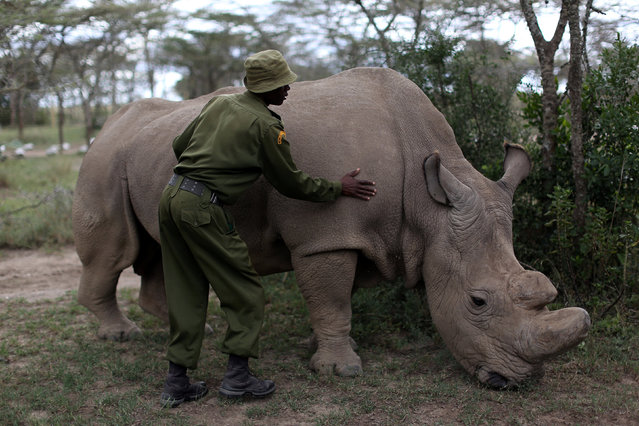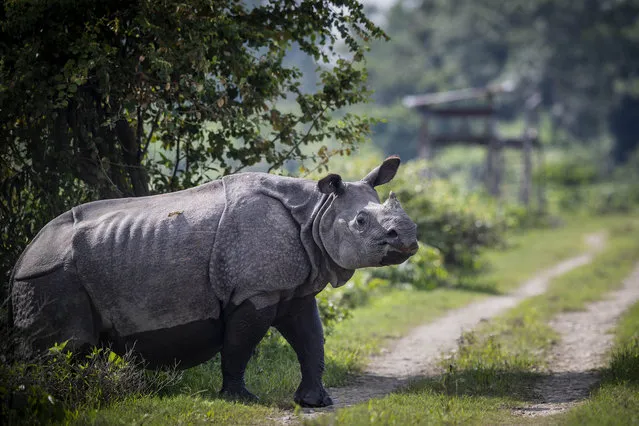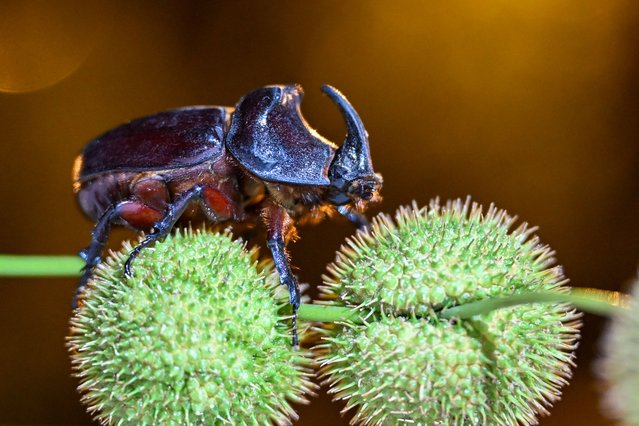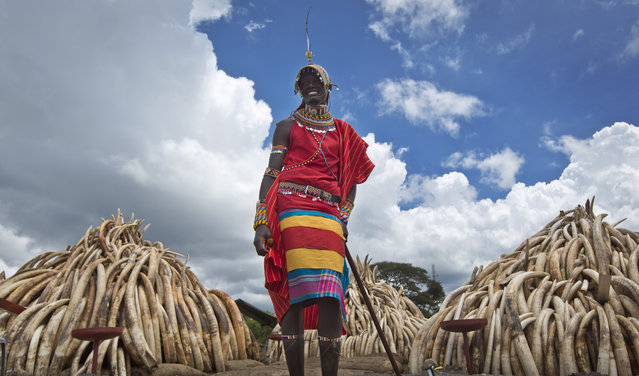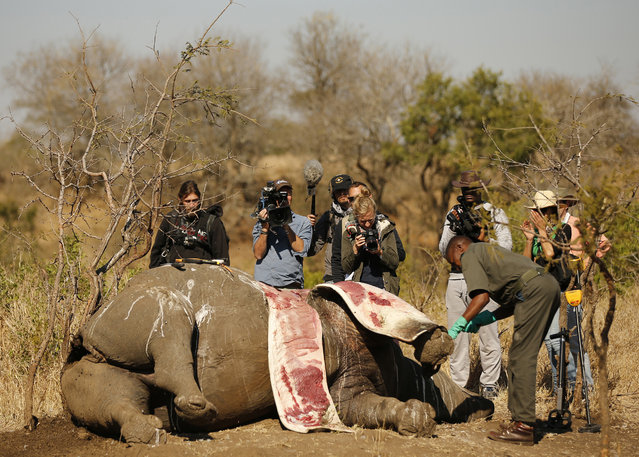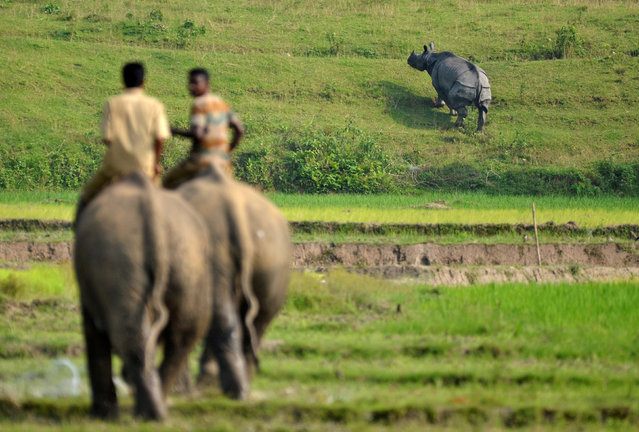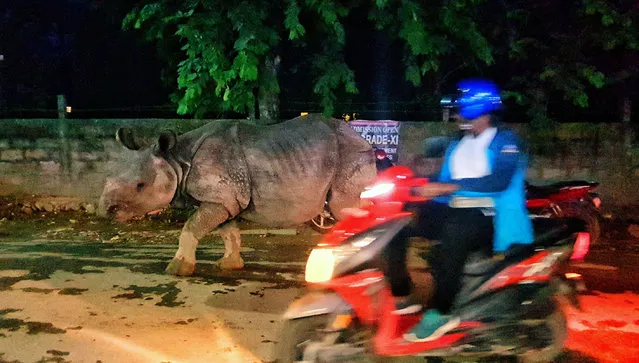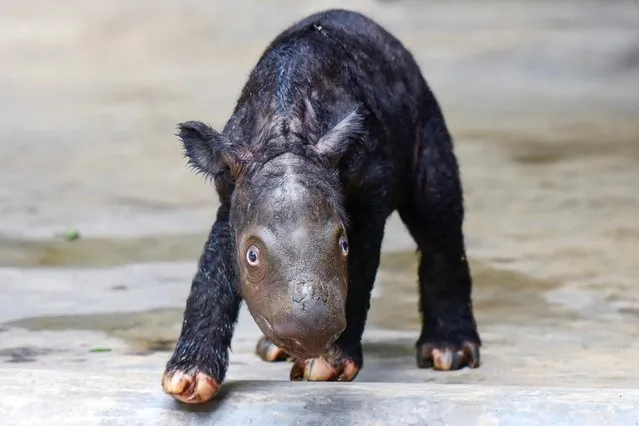
In this undated photo released by Indonesian Ministry of Environment and Forestry, a newly born Sumatran rhino calf walks in its enclosure at Sumatran Rhino Sanctuary at Way Kambas National Park, Indonesia. The critically endangered Sumatran rhino was born on Sumatra Island Saturday, November 25, 2023, the second Sumatran rhino born in the country this year and a welcome addition to a species that currently numbers fewer than 50 animals. (Photo by Indonesian Ministry of Environment and Forestry via AP Photo)
17 Dec 2023 05:52:00,post received
0 comments

